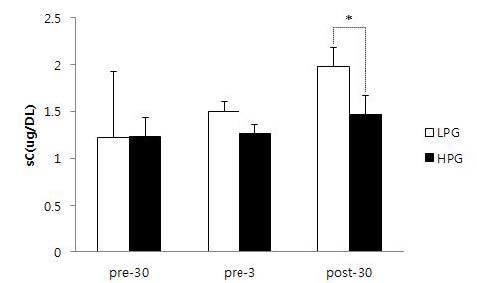1. Ali N, Pruessner JC. The salivary alpha amylase over cortisol ratio as a marker to assess dysregluations of the stress system.
Physiol Behav 2012;106:65-72. PMID:
22019784.

2. Kennedya B, Dillonb E, Millsb PJ, Ziegleraa MG. Catecholamines in human saliva.
Life Sciences 2001;25:87-99.

3. Ehlert U, Erni K, Hebisch G, Nater U. salivary alpha amylase level after yohimbine challenge in healthy men. J Clin Enocrinol Metab 2006;54:234-44.
4. Nater UM, Marca L, Florin R, Moses L, Langhans A, Koller W, Ehlert MM. Stress induce changes in human salivary alpha-amylase activity associations with adrenergic activity.
Psychoneuroendocrinology 2006;31:49-58. PMID:
10.1016/j.psyneuen.2005.05.010. PMID:
16002223.

5. Chatterton RT, Vogelsong KM, Lu YC, Ellman AB, Hudgens GA. Salivary alpha- amylase as a measure of endogenous adrenergic activity.
Cli Physio 1996;16: 433-48.

6. Lebanthal E. Role of salivary amylase in gastric and intestinal digestion of starch.
Digestion Diseas Sci 1987;32:1155-7.


7. Nater UM, Rohleder N, Gaab J, Berger S, Jud A, Kirschbaum C. Human salivary alpha-amylase reactivity in a psycho social stress paradigm.
Int J Psychophysiol 2005;55:333-42. PMID:
10.1016/j.ijpsycho.2004.09.009. PMID:
15708646.

9. Kivlighan KT, Granger DA. Salivary alpha amylase response to competition: Relation to gender, previous exerience, and attitudes.
Psyhoneuroendocrinology 2006;31:703-14.

10. Kivlighan KT, Wewerka SM, Gunnar MR, Granger DA. Salivary alpha amylase reactivity to the trier social stress test: relation to cortisol and autonomic response in normally developing adolescents. Paper to be presented at the Biennial Meeting of the Society for Research on Adolescence. San Francisco, CA: 2006.
11. Capranica L, Lupo C, Chiodo S, Cibelli G, Tessitore A. Salivary cortisol and alpha-amylase reactivity to taekwondo competition.
Eur J Appl Physiol 2012;112:647-52. PMID:
21643917.


12. Dehghan F, Khodaei F, Afshar L, Shojaei FK, Poorhakimi E, Soori R, Fatolahi H, Azarbayjani MA. Effect of competition on stress salivary biomarkers in elite and amateur female adolescent inline skaters.
Sci sports 2018;2018:1-8.

13. Kim K, Chung J, Park S, Shin FJ. Psychophysiological stress response during competition between elite and non-elite korean junior golfers.
Int J sports Med 2009;30:503-8. PMID:
10.1055/s-0029-1202338. PMID:
19301217.


14. Haneishi K, Fry AC, Moore CA, Schilling BK, Li Y, Fry FMD. Cortisol and stress reponse during a game and practice in female collegiate soccer players.
J Strength Cond Res 2007;21:3-8. PMID:
10.1519/r-20496.1.
15. Robazza C, Gallina S, Damico MA, Izzicupo P, Bascelli A, Fonso AD, Mazzaufo C, Capobianco A, Baldassarre AD. Relationship between biological marker and psychological ststes in elite basketball players across a competitive season.
Psycho Sport Exer 2012;13:509-17. PMID:
10.1016/j.psychsport.2012.02.011.

16. Robert-Mercier T, Longrois D, Guglielminotti J. Salivary amylase as a stress bio marker.
General Methods in Biomarker Research and their Applications 2015;1-17.

17. Robert-Mercier T, Longrois D, Guglielminotti J. Salivary amylase as a preoperative marker of anxiety in perioperative medicine.
General Methods in Biomarker Research and their Applications 2015;291-311.

18. Van Stegeren A, Rohleder N, Everraerd W, Wolf OT. Salivary alpha amylase as marker for adrenergic activity during stress: effect of betablockade.
Psychoneuroendocrinology 2006;31:137-41. PMID:
16046076.

19. Beck AT, Brown G, Epstein N, Steer G. An inventory for measuring clinical anxiety: Psychometric properties.
J Consult Clin Psychol 1988;56:893-7. PMID:
10.1037//0022-006x.56.6.893. PMID:
3204199.


20. Parnabas V, Abdullah NM, Shapie MNM, Parnabas J, Mahamood Y. Level of cognitive and somatic anxiety on performance of university kebangsaan malaysia athletes. Proceedings of the International Colloquium on Sports 2014;291-300.

21. Edith Filaire, Deborah Alix, Claude Ferrand, Michel Verger. Psychophysiological stress in tennis players during the first single match of a tournament. Psychoneuroendocrinology 2018;34:1507.
22. Gords EB, Granger DA, Susman EJ, Trickett PK. Asymmetry between salivary cortisol and alpha amylase reactivity to stress: Relation to aggressive behavior in adolescents.
Psychoneuroendocrinology 2006;31:976-87. PMID:
16879926.

23. Filaire E, Alix D, Ferrand C, Verger M. Psychophysiological stress in tennis players during the first single match of a tournament.
Psychoneuroendocrinology 2009;34:1507PMID:
10.1016/j.psyneuen.2008.08.022.












